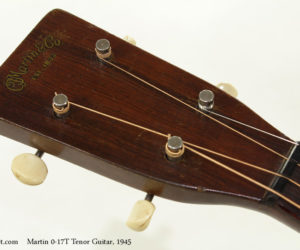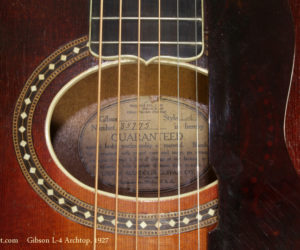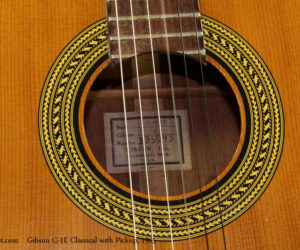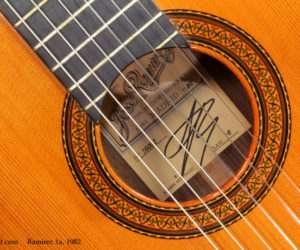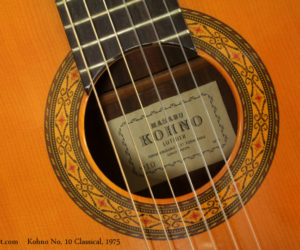Tenor guitars like this Martin 0-17T were very popular for quite some time, partly because they’re fairly portable and with only four strings, perhaps easier to use as an accompanying instrument to a voice. They seem to have fallen out of favour with the rise of amplified music, but have a solid place in some country and Celtic styles.
MORE →Posts Tagged Vintage
The Gibson L-4 was built between 1912 and 1956, and underwent a number of changes. Originally it had – like many archtops of the time – an oval soundhole; this changed to a round soundhole in 1928, and finally to the now-common F-holes in 1935.
MORE →In the early 1960’s, Gibson – like other manufacturers – responded to the change in markets caused by the folk boom. These instruments, like the Gibson C-1e Classical were not really meant to be strictly traditional classical guitars – they were meant to play softer folk styles, often with a pick.
MORE →The Ramirez 1a is the benchmark, the standard for professional, concert level classical guitars. Built entirely in the Ramirez shop in Madrid, Spain, the 1a uses the best materials available, and comes in Classical and Flamenco versions.
MORE →At a young age, Masaru Kohno developed an interest in classical guitar and travelled from Japan to Europe to learn guitar construction. He may have spent some time in Barcelona studying under Fleta, but certainly spent six months in the Madrid, Spain shop of Arcangel Fernandez before returning to Tokyo where he established his own shop. He quickly gained the respect and patronage of many highly skilled guitarists, and his instruments are regarded as top quality.
MORE →